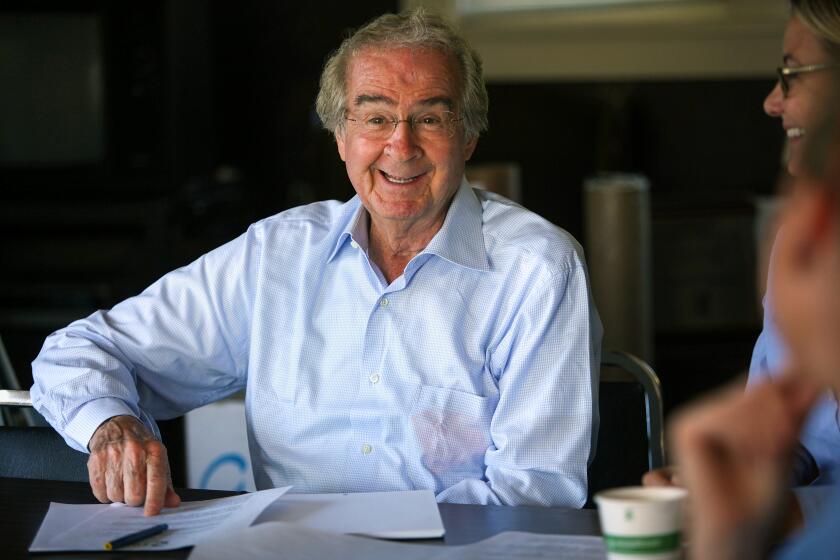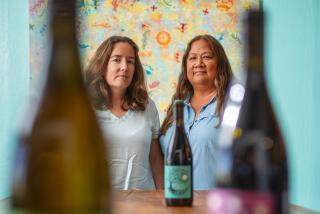
- “Sideways,” the character comedy that took the wine world by storm, turns 20 this week.
- Director Alexander Payne says he never could have foreseen its impact — with a Sideways hotel and themed wine tours.
- The movie normalized the way we talk about wine.
When director Alexander Payne set out to create the 2004 film “Sideways,” based on the then-unpublished novel by Rex Pickett about two friends’ wine-fueled visit to the Santa Ynez Valley, his intention was just to make a funny film.
“I just wanted to make a movie and I loved the fact that it was about wine,” says Payne, who acknowledges he had no way of knowing what the film would become. “Sideways,” which went on to receive five Academy Award nominations including Payne’s win for adapted screenplay, celebrates its 20th anniversary on Saturday. “Never could I have foreseen its impact, both its popularity as a movie and its impact on an industry.”
The effect of “Sideways” on the wine region in which it was set and shot is profound, with visitors flocking to California’s Santa Ynez Valley to experience “Sideways”-themed wine tours featuring wineries from the film such as Foxen, Firestone and Kalyra. What was known as the Windmill Inn where the characters stay is now called the Sideways Inn, and Frank Ostini and Gray Hartley — whose restaurant the Hitching Post 2 is central to both the book (Pickett was a regular) and the movie — say that there are still new customers every day who come to see the restaurant where the iconic scenes were shot.
At Âmevive, working animals, biodiversity, cover crops and no-till farming make for vibrant wines from native yeasts that are part of the DNA of the land.
“They make their own wines here. It’s just outstanding, very special,” says the film’s oenophile protagonist Miles (played by Paul Giamatti) while at the Hitching Post 2 bar.
After the film, Ostini and Hartley had to move their wine-making operation to a winery in Buellton with bigger tanks to support their increased production. “We took our small recipe and made it work in a bigger-size tank,” says Ostini, adding that they now make more than 500 barrels a year. To commemorate the film’s anniversary, the Hitching Post 2 released a limited-edition “Sideways”-labeled 2021 Highliner Pinot Noir, the wine featured in the film.
“There’s not a day that goes by that a comment isn’t made about ‘Sideways,’” Hartley says.

The impact the film has had outside the movie’s location is equally remarkable.
“The whole Merlot thing is just a joke. It’s so hilarious that one line of dialogue in the movie, one joke entered the popular lexicon,” says Payne of the film’s famous scene in which Miles threatens to leave a restaurant if anyone orders Merlot.
‘The “Sideways” Effect’
“If anybody orders Merlot, I’m leaving. I am not drinking any f— Merlot!” Miles screams at his friend Jack (Thomas Haden Church). The scene created what the industry called “the ‘Sideways’ Effect,” causing Merlot sales to drop by 2% while Pinot Noir sales increased 16% from January 2005 through 2008.
“I thought they were both fine,” says Payne of his feelings toward the two grape varietals before filming. “I like them both.”
Payne’s interest in wine began in his 20s and stemmed from a love of cooking. He says that before receiving his first big paycheck at age 29, which he spent on wine, his wine shopping had consisted primarily of bottles from what he described as a “proto Trader Joe’s” called the La Brea Circus.
“Pinot Noir was a growing category before ‘Sideways,’” says Ostini, noting Payne’s perfect timing for the film right as Pinot Noir was on the rise. “It was on a growth phase, and there were a lot of new plantings, and it was the up-and-coming thing.” On the other hand, Ostini believes that Merlot was over-planted at that time.
“They planted more Merlot in the weirdest places, in the Central Valley, and it was very popular. But there was a lot of bad Merlot. So they were kind of poking fun at that in the movie. Nobody ever dreamed that a joke in a movie — really, it was a joke — would move the market.”

Now, 20 years later, the Merlot versus Pinot Noir conversation has become somewhat muted, especially given the popularity of natural wine with younger generations.
Kae Whalen, who heads the wine program at Barr Seco, the popular new natural wine bar in Silver Lake that is packed on any given night with guests spilling out onto the Sunset Junction sidewalk, doesn’t find that the subject comes up there but says that type of conversation was more likely to occur at her previous job at Bar Chelou in Pasadena.
“I think that the clientele, the demographic that was going there, is just a bit different. I think that the average client at Chelou was more of, let’s say, a classic drinker.”
At nearby natural wine shop Psychic Wines, owner Zach Jarrett — who also owns wine bar Café Triste in Chinatown — says he will occasionally get a customer saying they don’t like Merlot.
The way we talk about wine
“Most of our clientele are 25 to 35, so for some people, that movie has no relevance. Other people sort of remember their parents drinking wine and have a little bit of a ‘Sideways’ effect. They’ll come and go, ‘Yeah, I don’t like Merlot.’ And I say, ‘Really? Why?’ And then they sort of pause and I say, ‘Oh, did your dad or mom used to say that because of the movie?’ — and they’re like, ‘Yeah, totally.’”
Both Jarrett and Whalen stress that in the natural wine community, the conversations around wine are now more focused on the winemakers, farmers and characteristics of the wines rather than on these kinds of generalizations about grape varietals.
“You can have a Pinot that tastes completely different from one person in the Loire, as opposed to how their neighbor is making it. People who are spitting distance of each other can have a completely different approach. And while there will be an expression of place there, there’s also going to be an expression of the person who made it,” says Whalen, explaining that even grape varietals made next door to one another can be very different.

“I think the effect was real,” says Jarrett. “But on this world of wine, that, I think, has almost no relevance anymore, especially as people are just being encouraged in so many ways to just taste and use their heart and decide if they like something or not, without being told in advance what it’s supposed to taste like.”
If there is one lasting impact of “Sideways” that everyone continues to acknowledge and celebrate, it is that it changed the way people talk about wine, not only making it more everyday and approachable but also normalizing it for anyone who wants to take a deep dive.
“It started a conversation that people were generally not having,” says fine-wine retailer Walker Strangis of Walker Wine Co., who worked for Christie’s in the wine auction business in the years following the film’s release. “Giamatti’s character is really serious about wine, right? Is that OK? Is that a little too extreme? Are we kind of getting into some strange culture? And the answer is, no. It made the younger audience, my contemporaries, and another generation, kind of laugh and say, ‘No, this is actually who we are.’ So finally, we got some validation out there.”
Iconic Napa Valley winemaker Warren Winiarski’s legendary Stag’s Leap Cabernet Sauvignon bested French domaines in a 1976 blind tasting. The tasting became known as the Judgment of Paris, and it secured California wines’ place on the world stage.
Jarrett points out that the character Miles was somewhat of an outsider at the time the film was made. “Miles was tortured with his, you know, unknowable taste,” says Jarrett, adding that now wine culture has transformed so much that Miles would fit right in at his Café Triste and restaurants like Night Market where wine conversations flow freely. “That place is for Miles literally. It’s a chic and hip spot in a really cool neighborhood in L.A. that’s been relevant and busy for a long time,” he says, referring to Night Market and its natural wine list. “I think Miles would have found himself a really popular kid all of a sudden, after a life of being like, ‘I don’t fit in anywhere.’”
In addition to the special-edition “Sideways” bottles, Hitching Post Wines has partnered with Searchlight Pictures for a series of events including a screening of “Sideways” followed by a Q&A panel with Alexander Payne and actor Virginia Madsen at Copia at the Culinary Institute of America in Napa this weekend; a dinner at Suzanne Tracht’s Jar in Los Angeles on Oct. 29; and a dinner at Akasha. on Oct. 30.
“I am so pleasantly surprised and touched that people still watch this now 20-year-old movie,” says Payne, who seems genuinely humbled by the film’s popularity. “One can never foresee that and it’s a really good feeling.”
Despite the wine industry’s general downturn, it’s clear from the crowds at Barr Seco and the excitement in Jarrett’s and Whalen’s voices that the kind of enthusiasm about wine that we all saw in Miles 20 years ago is as present as ever.
“Without something like ‘Sideways,’ the number of people who would have wine in the front of their mind as something they want to incorporate in their daily life would just be way less,” Jarrett says. “To have people come in here thinking about what they want to drink with dinner, and not having it just exclusively be older people or people from wine-making areas, is just amazing.”
More to Read
Eat your way across L.A.
Get our weekly Tasting Notes newsletter for reviews, news and more.
You may occasionally receive promotional content from the Los Angeles Times.












